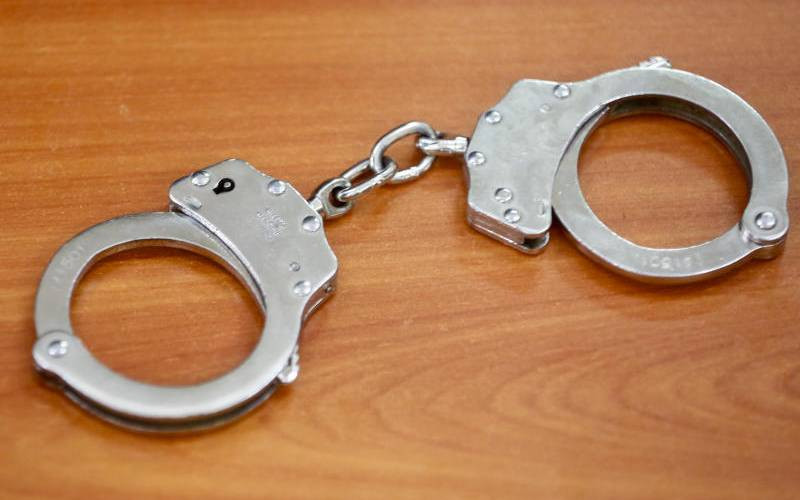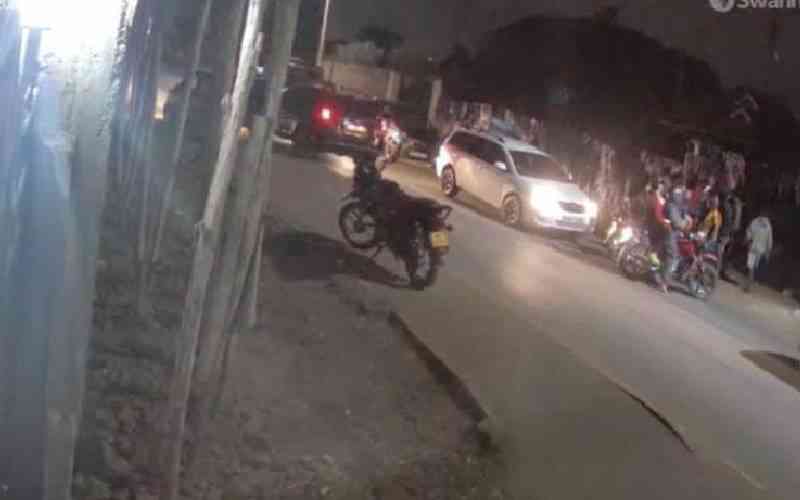
Toxic and hazardous. That is what a mountain of used needles, diseased body tissues, soiled bandages, aborted foetuses and other medical waste from theatre rooms can evolve into if not properly disposed.
In well-established hospitals, medical wastes are not thrown into garbage pits, but incinerated and the ash buried.
But in Nairobi, mushrooming small dispensaries are carelessly disposing toxic waste that can easily become deadly ‘biological weapons’ on a daily basis.
Most of these clinics are not licensed — they do not operate under laid-down rules and guidelines.
Rogue waste disposal companies at times dump hazardous materials in public places or even at the Dandora dumpsite.
Waititu Ng’ang’a, a leader at the Dandora dumpsite claims they usually come across gloves, tubes, swabs, bandages and foetuses, which they suspect could be originating from major hospitals in the city. But while he claims that dumping of sharp objects like syringes, needles, scalpels and blades has declined, Lameck Osieko, a community leader, thinks otherwise.




“Instances of children playing with used condoms and syringes are common. We have complained but no action has been taken,” claims Osieko, the chairman of the board of management of James Gichuru Primary School.
Kenyatta National Hospital, through the acting manager in charge of corporate affairs and communications, Kibet Mengich, says the major hospitals in the city have internal incinerators capable of handling all types of medical waste, and that any carelessly discarded medical waste must be originating from unlicensed health facilities.
The Nairobian pitched tent at an abortion clinic along Latema Street where a well-known doctor’s assistant revealed the clinic has no formal means of disposing of the tens of foetuses aborted daily.
Because of the illegal nature of their business, he explains, eight clinics based along the same street pay Sh50,000 every Friday to a fixer, who then passes the money to police, county government and Ministry of Health officials.
“The clinical wastes are collected every day before midnight by lorries. I actually don’t know where it is taken,” the assistant revealed to The Nairobian.
Dr Peter Oduor who runs a hospital in Embakasi says all medical waste should be incinerated at temperatures of between 800 and 1,100 degrees Celsius.
“That heat is enough to kill bacteria and viruses, but the ash could still contain dangerous metals like mercury, so the ash should be buried,” he explains.
His hospital has no incinerator, but he has an arrangement with Nairobi Women’s Hospital, which incinerates waste from his hospital.
According to the National Environment Management Authority (Nema), companies that produce hazardous or medical wastes are required by law to have contracts with waste disposal companies.
Stay informed. Subscribe to our newsletter
Tony Ngare from Nema’s communications department, says medical waste is not a big problem for the agency, since institutions that have medical wastes as by-products are in ‘serious’ businesses.
“These are institutions that have to comply with several stringent rules before they are allowed to operate. One can’t get approval to run a hospital without tabling clear guidelines on how to dispose waste. We of course strictly monitor all the institutions and always ensure they don’t bend or break the rules,” added Ngare while cautioning against the release of smoke from incinerators into the environment because such smoke contains harmful elements.
Residents living near Dandora reported high cases of respiratory diseases and skin infections. Medical records obtained by UNEP from the Catholic church dispensary at Kariobangi showed that an average 9,121 people were treated for respiratory tract-related problems between 2003 and 2006.
Professor Alfred Omenya, an environmental architect trained in sustainable urbanism and development, says a recent report on the global status of waste management ranks Nairobi as one of the worst in waste management.
Omenya, a dean at the School of Built Environment at the Technical University of Kenya, says guidelines on disposal of medical wastes are largely ignored by many multinational companies in the country.
“We all know which companies dispose their liquid waste by draining it into Nairobi River,” he says.
Raw medical waste and toxic ash from incinerators ends up in open dumps like Dandora, Ruai and Eastleigh, posing a health risk to thousands of people living nearby, according to Omenya, who has published over 70 academic papers in his research area.
He notes that not all hospitals have incinerators that can filter the smoke produced to weed out toxins from the smoke. “Some toxins, like dioxins, are produced when you burn plastics and hospitals heavily use plastics. So, the incinerator should also be able to stop toxins from filtering into the smoke produced,” he states.
According to Omenya, a medium sized incinerator can cost up to Sh20 million and should have its chimney installed at least 10 feet above the tallest building in its vicinity, so that the smoke is not released directly to people.
Nairobi City County Secretary Dr Robert Ayisi who is the immediate former Health Chief Officer said: “All the medical waste in our hospitals, including body parts cut off from patients after surgeries are incinerated within our hospitals. We have incinerators with a capacity to handle 100 kilos of this waste in an hour in Pumwani and Mbagathi hospitals.”
Body tissues from mortuaries are buried in a cemetery, according to Ezra Olack, the chairman of Funeral Services Association of Kenya (FUSAK).
“Already, the bodies have been embalmed, so disposal of waste is not a big problem. But in rare cases of removing tissues, permission must be sought before they are disposed at a cemetery,” he stated.